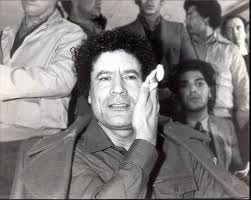Few post-independence leaders in Africa grasped the complexity of state-building once the colonial regimes withdrew. They viewed victory over colonisers as a final milestone, rather than the first step of a long and demanding transition. Lee Kuan Yew, who led Singapore from post-colonial chaos into structured economic strength, recognised early on that removing empire was only the start. He observed that many third world leaders knew how to destroy institutions, but lacked the competence or discipline to construct new ones. His assessment was not theoretical. It was based on decades of observation and lived political experience.
Where Singapore built strong administrative systems, focused on capital productivity, and invested in applied technical education, most African leaders made emotional appeals and adopted borrowed socialist slogans without understanding their operational demands. The promise of instant abundance was accepted without a framework for production. In the presence of sudden wealth gain and access to public resources, rhetoric replaced working in the interest of the public. Maintaining power, staying in power, and party loyalty replaced any semblance of ethics and competence. These leaders treated public resource wealth as a reward for political victory instead of as a tool for long-term industrial strategy. In this, Lee’s observations are supported by decades of outcomes across the African continent. What a dead beat continent it turned out be.
The Rapid Africa Plan (RAP) cited in an rticle on this site, directly addresses the problems Lee identified. I have not seen any other plan for comparison or competing idea, so I refer it, and it recognises that inherited structures do not serve African development. RAP explains that independence movements overestimated what political sovereignty alone could deliver. The authors point out that freedom without systems does not build power. They argue that the education of African leaders, shaped by colonial and post-colonial elites, failed to provide the mental tools needed for industrial governance. Their conclusion aligns with Lee’s, that, many liberation leaders believed that the mere exit of colonial administrators would produce national prosperity.
In contrast, Singapore treated governance as a technical craft. They trained administrators to make hard decisions, often at odds with populist demands. Singaporeans implemented policies to raise productivity, they didn't waste decades concetrating on maintaining revolutionary morale. The Singaporean system rewarded skill. Singapore’s transformation came through discipline, planning, and execution, without relying on donations or conferences. Africa, by comparison, has spent decades trapped in externally managed development cycles. Most of its major decisions remain dependent on donor preferences, foreign benchmarks, and inherited assumptions.
(Nkwame Nkrumah, on hearing the news about the coup)
Lee criticised the adoption of economic ideologies that had not been tested under African conditions. He warned that admiration for socialist models, without operational capacity or real productivity, would lead to misallocation of capital and failure to meet basic needs. The historical record has confirmed this. Most African states tried to run centralised economies without the systems to support them. Corruption and inefficiency followed suit. The state functioned as a distribution centre for favours and failed to operate as an engine for development.
The Rapid Africa Plan is built on the understanding that political systems require a clear ideological foundation, but that ideology alone cannot deliver industrial transformation. The plan defines its ideological base in terms of sovereignty, self-reliance, and continental integration, yet it places equal weight on technical execution. It outlines a structured programme focused on industrial engineering, large-scale infrastructure, and energy development. Industrialisation is treated as a matter of national security and long-term survival, not as a symbolic ambition. The plan identifies administrative competence as essential for delivery, with detailed proposals for implementation through coordinated planning, skilled management, and locally developed systems. RAP draws from successful examples across Asia, Latin America, and pre-liberalisation Africa, where measurable outcomes were achieved through grounded strategy rather than donor dependency. The plan treats development as an applied process that requires trained personnel, functional institutions, and sustained effort across generations.
(Patrice Lumumba)
Lee Kuan Yew maintained that order and rule-based governance must come before the pursuit of wealth. Africa followed the opposite path. Political symbolism took priority while structural work was neglected. Freedom was celebrated, but economic thinking was outsourced. Inherited institutions continued to shape policy decisions. This approach led to long-term economic instability, institutional weakness, and growing dependence on external actors.
Lee also understood the danger of believing that resource wealth alone could sustain a nation. Singapore had no natural resources and succeeded. Africa has vast mineral, land, and energy assets, yet remains impoverished.
(Thomas Sankarah)
Natural resources have never been the central problem. Disorganisation and poor planning have blocked progress. The Rapid Africa Plan addresses this directly, building its strategy around rational resource management, coordinated industrial planning, regional integration, and sovereign infrastructure control. Science and engineering form the core of its methods, with practical systems replacing slogans and policy declarations. The failure of many post-independence states reflects this gap between natural wealth and institutional capacity.
The failure of many African states to advance after independence supports Lee’s core argument. Political freedom came without the necessary competence to govern. Revolutionary movements succeeded in removing colonial rule, yet left no functional structures behind. Africa holds formal independence while remaining structurally dependent. That condition will continue until new systems are built and applied through practical action rather than theoretical debate.
(Colonel Muammar Gaddaffi)
The example of Singapore shows what is possible when leadership is anchored in realism and forward planning. The work of Professor Hannington Mubaiwa and his team provides Africa with a rare opportunity to rethink its path. Their plan addresses the very gaps that Lee identified decades ago. The question is whether Africa will choose to repeat its habits or adopt the discipline required to break them. The first thing is to break up the patronage systems and the pipeline networks that allows western cartels to impose puppets on African nations.
(Current hope rests with the AES leaders)
Obviously, we have to balance with a critique. I know some readers will skip the essence of the article and catch feelings only. Yes, Lee Kuan Yew’s observations carry weight when describing the failures of post-independence African governance, particularly in matters of state-building and economic management. His account, however, omits critical geopolitical factors that shaped the landscape in which those failures occurred. Many of the African leaders who took power in the 1960s inherited states already targeted by Cold War rivalries, intelligence operations, trade manipulations, and proxy wars. Western states pretended to simply withdraw from Africa, whilst basically shifting strategies. So, we were bombarded with imagery of colonial flags camibg down, but control was outsourced to loyal local actors, the puppets, the sell outs, often backed by military or economic coercion. The narrative of a clean handover ignores the violence, sabotage, and interference that followed independence across much of the continent.
( Prof. Hannington Mubaiwa, Rapid Africa Plan)
Singapore’s position during this period was markedly different. Its strategic location on the maritime chokepoint of Southeast Asia made it a valuable asset to the United States and its allies. Under the logic of Cold War containment and Rimland theory, Singapore was permitted to develop under Western protection and commercial integration. Similar conditions applied to South Korea and Japan, which also benefitted from heavy Western support in exchange for alignment. None of these states faced the scale of targeted destabilisation that post-colonial Africa endured. They did not suffer economic sanctions for asserting sovereignty, nor were their early leaders assassinated or removed under the guise of anti-communism. The same cannot be said for Congo, Ghana, Burkina Faso, or Guinea, where reformist leaders were killed or overthrown with external backing.
Lee’s phrasing also obscures the reality that independence in Africa was fought for, not granted. Blood was spilled to remove colonial authority. Describing it as a handover misrepresents the sacrifices made and the force required to break the colonial structure. In Nigeria, the British governor-general committed suicide shortly after independence, reportedly out of regret and humiliation, not magnanimity. The language of transition conceals the hostility and resistance faced by liberation movements across the continent.
So lets not use the critique as an excuse to bury heads in the sand. Singapore’s model remains useful for what it reveals about disciplined governance and long-term planning, but its success cannot be read in isolation from the conditions that supported it. African states operated under a different set of pressures, many of them deliberately imposed to prevent successful national development. Attempts to pursue state-led models or pan-African economic alignment were met with obstruction and retaliation from former colonial powers and their allies. In many cases, these efforts were dismantled before they had time to mature.
Yew’s framework does not address how economic sabotage, debt traps, intelligence interference, and proxy control shaped the trajectory of African states. His silence on these matters does weaken the full picture. Structural failure in Africa was not solely internal as “we all know”, it was designed and maintained from outside, after the departure of faces and formal administrators.
That context does not excuse misrule, but it changes how failure should be measured. The critique remains, many African leaders failed to govern effectively. But they failed in a world that was working against their success from the outset. The Rapid Africa Plan reflects an awareness of this history, and does not seek to replicate models from Singapore or the West. It seeks to reframe African development from the ground up, with full knowledge of the barriers that have stood in its way. In that sense, it offers a more complete response to the legacy Lee Kuan Yew described, and to the parts of it he chose to leave out.
The success of this site is because of you. If you think my voice should be heard louder then PLEASE support by becoming a PAID SUBSCRIBER. I’m here for your raw, straight, and dedicated analyses. Your support is appreciated. Thank you.
buymeacoffee.com/ggtv

















Share this post